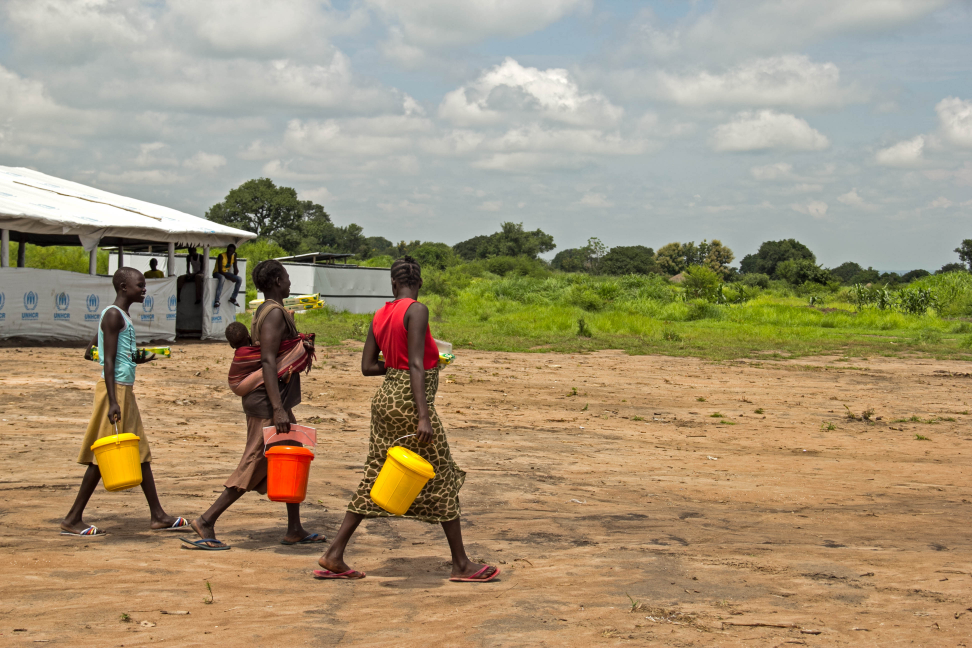What Zemio does not have… And Obo does

A couple of months ago, my colleague Jean-Pierre Dushime and I discussed results of a rapid survey we conducted in Obo, a small town in eastern Central African Republic (CAR), as part of this project. Obo, the capital of Haut-Mbomou, one of the 14 prefectures in CAR, is “set along a narrow dirt road cuddled by tall mango trees (…) [over 1,200 km] from the national capital Bangui - a one way seven-day bus ride bus during the dry season or two to three weeks during the rainy season,” as my colleague Raimondo wrote in one of his blogs back in May. So, a pretty remote area for what “we all may know.”
The results that came out of Obo (see report here) showed the importance of local radio as the main source of information on news, security, and humanitarian action. The survey also documented the low literacy level and low usage of cellphones and text messages, especially among women.
We conducted a second rapid survey (download report here) among 400 randomly selected adults in Zemio, another small town in Haut-Mbomou, in eastern CAR, 200 km from Obo and closer to Bangui, with the objective of exploring the sources of information, their media consumption habits and their interaction and perception of humanitarian organizations. We wanted to compare these results with those from Obo and we found some really interesting things.
In most regards, residents in Zemio are better off compared to those in Obo. The socio-economic situation is better: the average income of respondents in Zemio is 25% higher than the average income of respondents in Obo, a higher proportion of the population is involved in trade and other activities beside farming, and a higher proportion is literate.
Data collected on assets also suggest that respondents in Zemio are on average wealthier than those in Obo: over twice as many owned a cellphone (51% vs. 21%) and ownership of radio was also more frequent (58% vs. 47%). Finally, respondents in Zemio have been significantly less exposed to violence by armed groups in general, and the Lord’s Resistance Army (LRA) in particular.
But Obo has one thing that Zemio does not have: A community radio.
Sure, as you may remember (check another great post on Zemio by Raimondo), Zemio has “radio” Gambolipa, a rather ingenious microphone and loudspeaker system that broadcasts news to the audience in the center of the town. Despite their intentions “radio” Gambolipa falls short of the reach, even limited, of a community radio like Radio Zereda, Obo’s community radio.
And while the design of the study does not allow establishing causality, the results are nevertheless suggestive of the importance of such a community radio: respondents in Zemio were more likely than those in Obo to mention informal sources such as family and friends among their main sources of information, and they were more likely to rank negatively the quality of the information on news, security, and humanitarian action.
This is despite the fact that respondents in Zemio were more likely to have access and listen to national media compared to those in Obo. These results along with additional in-depth interview suggest that information must be local and that the proximity offered by community radio may build a sense of trust in the information provided.
Despite the lower level of trust in, access to and perceived quality of information in Zemio compared to Obo, respondents in Zemio did not report lower levels of understanding or worst perception of humanitarians.
This suggests that providing better/more information may not have a direct influence on an already positive perception of humanitarians. This, however, should not undermine Internews’ efforts to support a two-way communication between humanitarians and affected communities. The main goal of the project is not to build better perception, but rather to improve emergency response, community participation, and community resilience.
Patrick Vinck Ph.D. [email protected](link sends e-mail)External evaluator of the Internews HIF project in CAR Research Scientist at the Harvard School of Public Health and Associate Faculty with the Harvard Humanitarian Initiative (HHI)
Stay updated
Sign up for our newsletter to receive regular updates on resources, news, and insights like this. Don’t miss out on important information that can help you stay informed and engaged.
Related articles
.png)


Explore Elrha
Learn more about our mission, the organisations we support, and the resources we provide to drive research and innovation in humanitarian response.